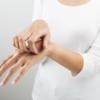The Causes, Risk Factors, Symptoms, Diagnosis, and Treatment of Oesophageal Thrush

Oesophageal thrush is a yeast infection of the throat. It is also known as oral candidiasis or oropharyngeal candidiasis. A healthy person is unlikely to develop this condition. It affects only those with a weakened immune system such as patients with HIV, cancer, and those on immunosuppressive therapy. Read on to learn more about the causes, risk factors, symptoms, diagnosis, and treatment of oesophageal thrush.
What is Oesophageal Thrush?
Oesophageal thrush is a yeast infection of the throat. It is also known as oral candidiasis or orophatyngeal candidiasis. This condition is caused by a fungus belonging to the Candida family. There are many different organisms of the Candida family that can cause oesophageal thrush but the most common organism is Candida albicans.
How Does One Develop Oesophageal Thrush?
Candida is a naturally occurring organism found in your body. It is usually found on the surface of the skin and within your body. Other good bacteria also reside on and in your body. These bacteria keep the Candida organisms under control. But sometimes, an imbalance between the Candida organisms and the healthy bacteria can result in the overgrowth of these Candida organisms thus developing into a yeast infection.
What Are The Risk Factors of Oesophageal Thrush?
A healthy individual is not likely to develop oesophageal candidiasis. Those with a compromised immune system or a suppressed immune system are more likely to develop this condition. The following are a few risk factors associated with oesophageal thrush.
- Patients with HIV/AIDS
- Cancer
- Elderly people
- Diabetes mellitus – This is especially true if your blood sugar levels are not under control. High sugar levels create an ideal environment for the yeast and allow them to grow.
- Babies born to mothers with vaginal thrush at the time of vaginal delivery
- Infants who breastfeed on mothers with infected nipples
- Smoking
- Wearing of dentures
- Dry mouth
- Taking medications like antibiotics or immunosuppressive drugs like corticosteroids
- Chronic diseases
- Eating a lot of sweet foods
What Are The Signs and Symptoms of Oesophageal Thrush?
The signs and symptoms of oesophageal thrush are:
- Appearance of a white lesion on the lining of your oesophagus or throat. This may have the appearance of cottage cheese. They tend to bleed on contact.
- Pain in your mouth and throat
- Dry mouth
- Painful swallowing
- Difficulty swallowing
- Nausea and vomiting
- Loss of weight
- Chest pain
Sometimes, oesophageal thrush may spread to your mouth and result in oral thrush. The signs and symptoms of oral thrush include the following:
- Creamy white patches on the tongue and on the inside of your cheeks.
- Whitish lesions on the roof of your mouth, tonsils, and gums.
- Cracking at the corners of your mouth.
Sometimes, oesophageal thrush is transmitted to breastfeeding infants through the infected nipples of the mother. Here are a few signs and symptoms to check if you have developed candidiasis on your breasts.
- Red and itchy nipples
- A stabbing pain felt deep within the breast
- Severe pain while breastfeeding the baby
- Cracking of the nipples
- Sensitive nipples
If you have any of the symptoms above, keep a close eye on your baby to see if they have developed the infection as well. While unable to say if they are feeling bad, they will noticeably become more irritable and fussy.
How is Oesophageal Thrush Diagnosed?
On your first visit with the doctor, he or she will take your complete medical history and will examine your mouth and throat. If your doctor suspects oesophageal thrush, he or she may perform a throat culture and an endoscopic exam.
A throat culture is carried out to see if there are any bacteria or fungi growing in your throat. During the procedure, your doctor will first swipe your throat with a cotton swab. Whatever liquid was picked up by your throat will be then placed into a petri dish or placed onto a slide, which will later be viewed under a microscope to identify the organism.
An endoscopic exam is done to confirm the diagnosis because just seeing Candida organisms in the throat culture is not sufficient to make a diagnosis. This is because Candida is one of the normal flora found on and in your body.
During an endoscopic procedure, your doctor will use an endoscope which is a thin flexible tube with a camera attached to it, to visualize the inside of your oesophagus. This tube can also be passed down to the stomach and the intestines to check the extent of the infection.
How is Oesophageal Candidiasis Treated?
The main aim of treatment in oesophageal thrush is to kill the fungus and prevent it from spreading.
Treating oesophageal thrush in a healthy adultIn healthy adults, your doctor will recommend that you increase the consumption of yoghurt to increase the normal flora of your body and restore the imbalance. Another treatment option that is recommended is taking acidophilus to treat the infection.
Treating oesophageal thrush in adults with a compromised immune systemAdults with a oesophageal thrush and a compromised immune system need antifungal treatment such as itraconazole. These antifungal drugs kill the fungi and prevent them from spreading to other areas of the body. Antifungal drugs come in the form of tablets, lozenges, or liquids to be used as a mouth wash and then swallow.
In very severe infections, your doctor will recommend that you get admitted to the hospital and started on intravenous antifungal medication such as fluconazole.
Treating oesophageal thrush in infantsIf your baby is infected with oesophageal thrush from having suckled on infected nipples, your doctor will prescribe you antifungal drugs to be applied on the breasts and another drug to be given orally to your baby.
It is important to keep in mind that you should frequently clean the baby’s bottles and pacifiers with a vinegar and water solution. Following this, air-dry them to prevent the fungus from growing.
How to Prevent Oesophageal Thrush?
The following tips will help you reduce the risk of developing oesophageal thrush.
- Practice good oral hygiene
- Eat yoghurt
- Limit the amount of sugary food intake
- Regularly go for dental checkups
- Treat vaginal yeast infections.
- If you have infected nipples, treat them soon.
- Clean the accessories of the baby such as feeding bottles and pacifiers regularly and air-dry them.
- Wash your mouth after using any immunosuppressive medication such as corticosteroids.















